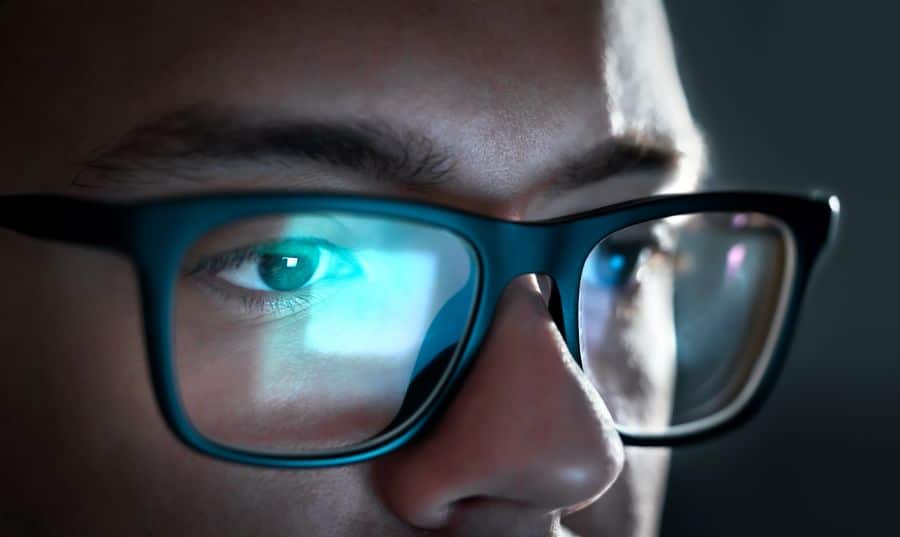Managing cybersickness: Symptoms and remedies
Read about the symptoms of the ever-pervasive cybersickness and how you can avoid suffering from this modern-day affliction.
With society’s extensive dependency on digital screens nowadays, cybersickness is a very common problem. Cybersickness is a collection of symptoms caused by prolonged use of computers, TV, smartphones, or other digital devices with a screen that involves being stationary for a long time.
There are three primary categories of cybersickness symptoms: oculomotor issues, disorientation, and nausea. The oculomotor issues are caused by the nerve that facilitates eye movement being overtaxed and leads to headaches, fatigue, and eye strains. Disorientation includes vertigo and feeling dizzy. Other symptoms of cybersickness like blurred vision and trouble concentrating can correspond to more than one category.
The symptoms of cybersickness occur when your brain receives contradictory information from your senses. When you view screens for a period of time, your body remains stationary, but your eyes see motion.

The symptoms of cybersickness
Cybersickness is commonly likened to motion sickness due to both causing similar symptoms. Although they are two very completely different things, they are alike in that some people do not need much incitement to experience them, while others hardly ever feel them.
Nausea
If you happen to experience nausea when looking at a screen for an extended period of time, it might be a sign of cybersickness. For people who suffer from cybersickness, nausea is the first symptom they experience.
Eyestrain
Constantly looking at digital strains puts a lot of pressure and stress on your eyes. Blurry vision, dry eyes and irritation are all indications of cybersickness.
Headache
Staying in one position for too long can lead to pain in the shoulder, neck, and back. When that is combined with eyestrain, headaches are only a step away.
Dizziness
As you scroll past the contents on your screen, your eyes tell the brain that there is ongoing motion. But your body’s vestibular system and proprioceptive system do not sense any movement. Resultantly, the brain receives contradictory signals. This leads to feelings of light-headedness and dizziness. This sort of disorientation can also leave you having trouble concentrating.
Other symptoms may have you feeling flushed, sweating excessively, and feeling drowsy.

Remedies for cybersickness
If you begin feeling cybersickness symptoms, immediately step away from the screen and rest. Avoid looking at screens until the symptoms have abated completely.
However, the best solution is to take preventive measures. You may be able to avoid cybersickness in the first place by doing the following:
- Cut down the amount of time you spend in front of screens
- Every once in a while, focus your eyes on a stable object away from the screen
- Avoiding using multiple screens simultaneously
- Take frequent short breaks to rest your eyes and change positions
- Slow the speed of your scrolling
- Do not consume heavy foods before long periods of screen usage.
Usually, you do not have to see a doctor for cybersickness, but if you believe you are experiencing frequent bouts of cybersickness and they have become much too intense, do consult with your GP.
While cybersickness symptoms can be lessened or altogether terminated, it is still important to look after your overall wellness. VIVO Clinic’s Lymphatic Vacuum Massage can help you with it.
Related Articles

Black Friday: Where, When and Why
What's the DEAL with Black Friday? Our treatments are 50% for Black Friday (see prices), but what exactly is it,...
Is Eyelid Surgery Right for You?
In this two-part article, we explore the circumstances which may require eyelid surgery (Blepharoplasty), the benefits/drawbacks of surgery and the alternatives...
PCR Test for Travelling to Cyprus
For your convenience, we now have a regularly updated Covid-19 travel advice portal which has lots of information about flying...1,000,000
Customers
Saph was amazing today, very professional and explaining everything as she went along. I was so happy with the treatment and service today that I ended up booking for a plasma treatment in September.
Welldone guys and keep up the good work. We all need Vivo in our lives!
 close
close





